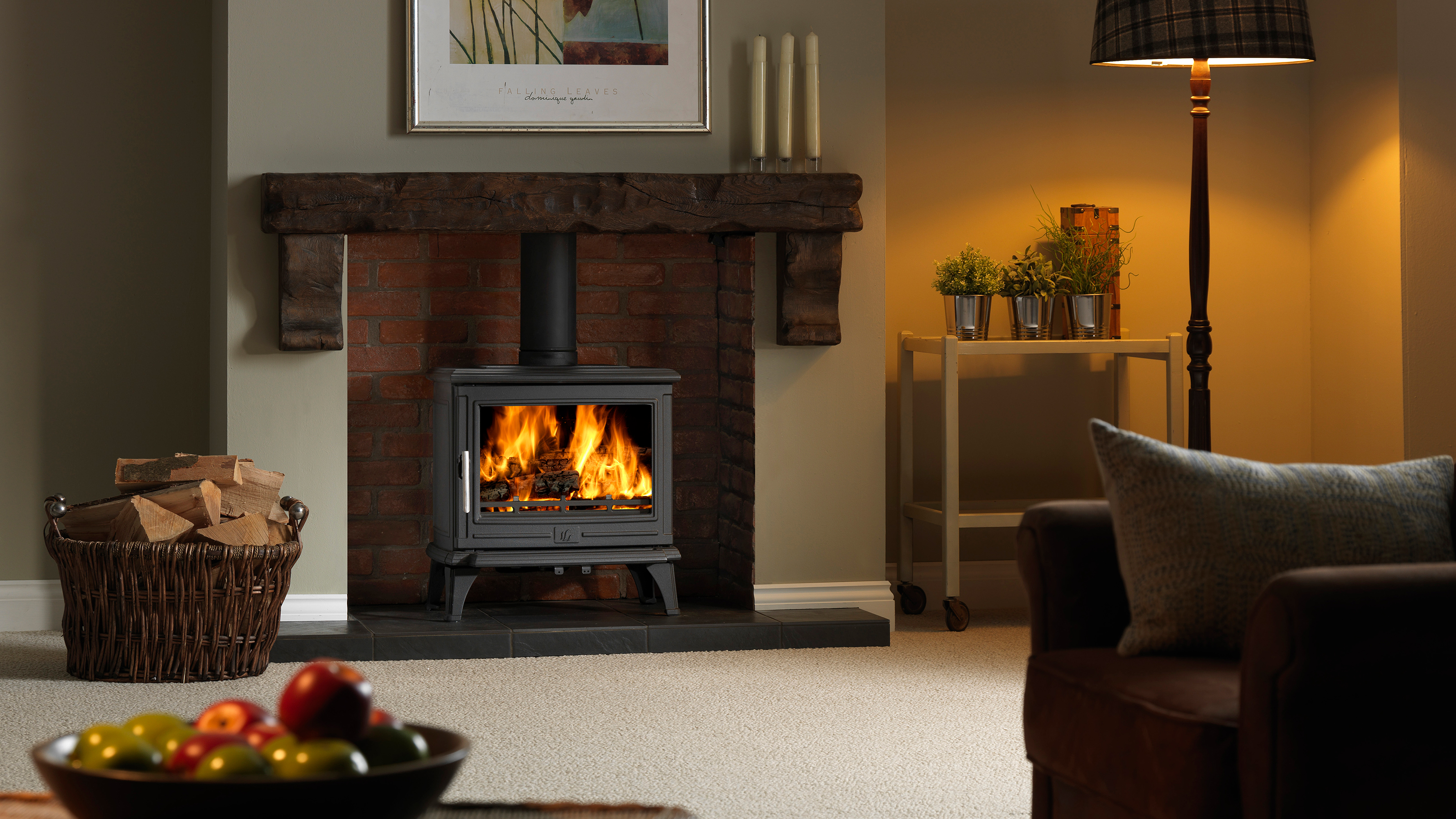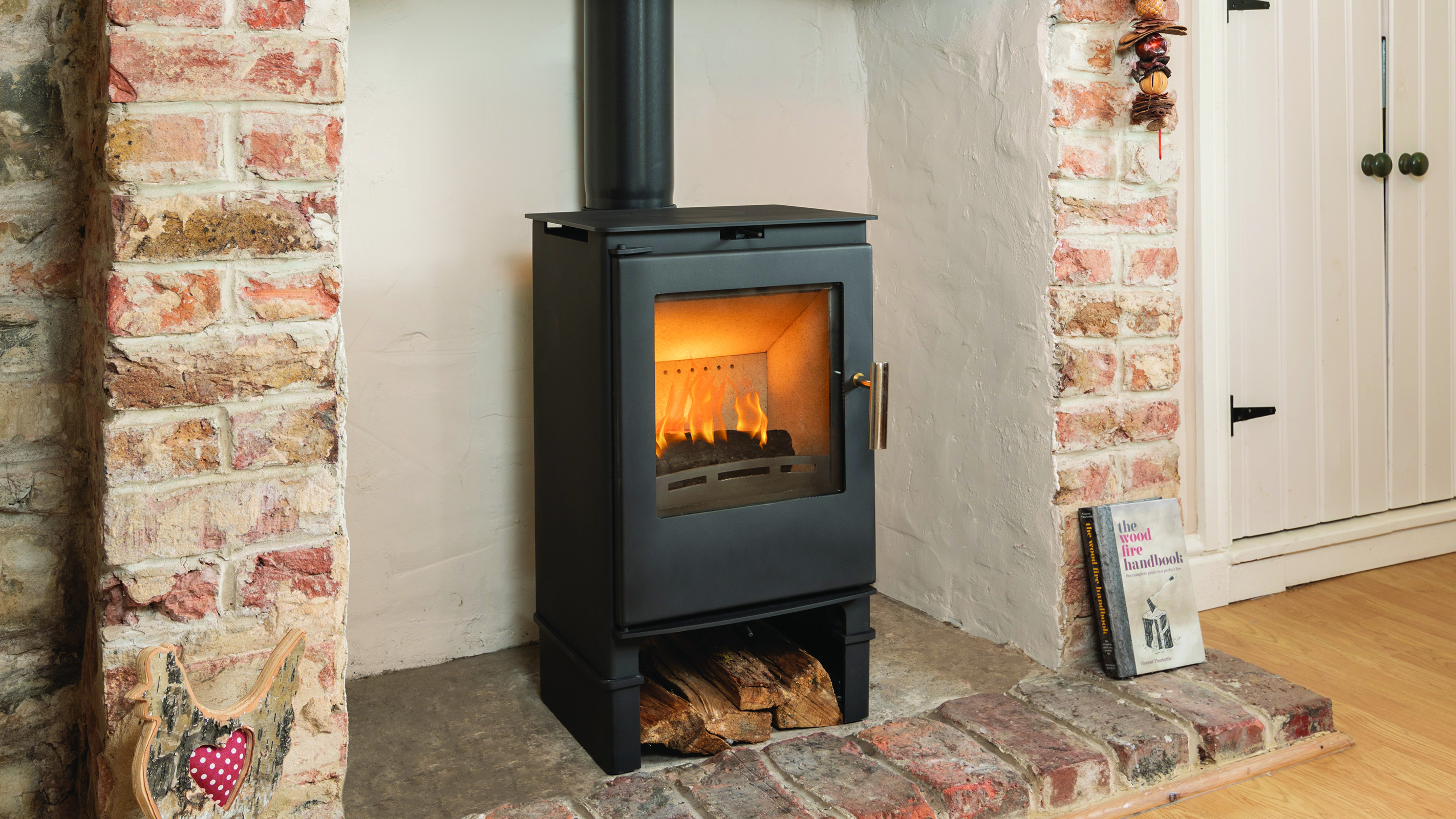Log burner ventilation requirements you need to know about
Having the right log burner ventilation measures in place is key to keeping your fire burning effectively and your home safe. Here, industry experts answer all your questions

While log burner ventilation might not be something you have given a huge amount of thought to, it is actually a really important element when it comes to the installation and ongoing maintenance of your log burning stove.
Not only do the building regulations set out certain requirements when it comes to fitting log burning stoves, but putting the right ventilation measures in place will also mean that your stove works at peak efficiency and that the air quality inside your home remains at a decent level.
We've spoken to a selection of industry experts in order to ensure you are crystal clear on what kind of ventilation requirements you will need to consider and put in place in your home if you are fitting a wood burning stove, whether you are building a self build from scratch, renovating a dilapidated property or simply like the idea of introducing one into your existing home.
Why is log burner ventilation necessary?
Before we get into the nitty gritty of putting the right home ventilation measures in place within your home, it is really useful to understand why they are required.
“All stoves require a sufficient supply of air for combustion to operate correctly and to ensure a good flue draw to disperse products of combustion to outside," explains Calvin May, Head of Technical Services at HETAS. "How much air is available within a property will be fully dependent on the property’s construction, any existing ventilation openings and any home improvements undertaken to increase its air-tightness.
“Having a vent fitted as part of the installation can have a beneficial impact on indoor air quality too, as it encourages more frequent air changes, meaning stagnant air is continually being replenished with fresh air from outside."
What do the building regulations say about log burner ventilation?
As with so many fixtures, fittings and features of our homes, in England and Wales, the installation or alteration of log burning stoves are subject to the Building Regulations.
Bring your dream home to life with expert advice, how to guides and design inspiration. Sign up for our newsletter and get two free tickets to a Homebuilding & Renovating Show near you.
The Approved Documents F, J, L, G, P are all applicable and most work will be notifiable to the relevant Local Authority. When it comes to ventilation, Approved Document F is the one you need to be paying heed to. If you fail to comply, your household insurance could be affected and you may well run into difficulties should you wish to sell your house in the future too.
"The building regulations on ventilation for stoves differ depending on the age of the house, and on what renovations may have been made on older properties," explains Chris Baines, MD of Eurostove Ltd. "If the house has air permeability of more than 5.0m3 (h.m2) and the appliance is 5kw or less, no additional air ventilation is needed."
But how do you know what ventilation requirements your particular property will need?
"Generally speaking, houses built before 1980 fall into the above category as there is enough natural ventilation, including either airbricks or fixed air trickle vents, which were part of the building regulations at the time," says Chris Baines. "However, if your property has been renovated this will probably have moved your property into the next category which is permeability of less than 5.0m3 (h.m2). This means that a new fixed vent will need to be installed along with your new stove. If you use a qualified Hetas (or equivalent) installer, they will assess your property and fit the relevant ventilation."
Any how about newly constructed homes?
"All new build homes require ventilation, for any size stove, including those under 5kW," clarifies Chris Baines. "The amount of external air needed is around 550mm3 per kW, which can easily be achieved with an airbrick or trickle vents — or an external air kit (more of which later) may be specified by the stove manufacturer. At Eurostove we like to recommend both solutions if possible."

What log burner ventilation requirements are there for new homes?
"In relatively airtight properties such as new builds, there must be an air vent permanently open to the outside," says Michael Coke, Biomass Products Development Manager at Stovax. "The size of the air vent opening is dependent on the kW output of the appliance in the room. In less airtight properties built pre-2008 that have not been renovated, the first 5kW of an appliance doesn’t require an air vent, but every kW over that requires an additional 550mm2 sized hole."
What features of new homes affect log burner ventilation?
"Modern rooms may be adversely affected by external factors, such as mechanical ventilation with heat recovery (MVHR) often used in new homes, or extractor fans in an open plan kitchen living area," explains Chris Baines. "In these cases, it can cause problems for stoves, which then need an independent air supply.
"Carbon monoxide alarms are a mandatory part of all installations, but such safeguards are not an alternative for proper healthy ventilation."
"Even a 5kw stove will need a permanent air vent if you live in a new build property or if your property has recently been upgraded to a modern standard," says Calvin May. "It’s important to note that the amount of ventilation required will increase dependent on the kW output of the log burner — the higher the kW output of the wood burner, the more air is needed."
Do renovations and period houses need ventilation for a log burner?
“Older properties with little airtightness can, in most cases, operate without a permanent air vent being installed, if the wood burner is rated below 5kW," says Calvin May. "Appliances over this output rating may still be required to have a permanent ventilator installed.
“In most cases, houses constructed after 2008 are built to a higher airtightness specification, meaning less air from outside permeates through the building fabric. However, this could also be the case with older properties which have undergone considerable air-tightness improvements, such as double/triple glazing, improved loft or cavity insulation and any other draught proofing measures.
“The general rule of thumb is these types of properties will require some form of permanent ventilator to be installed in the room containing a wood burner for it to operate effectively,” continues Calvin.
What are direct air supply stoves?
"Some woodburning appliances have the option of an 'outside air kit' that ducts the air from outside directly to the appliance, without the need for an open vent into the room," explains Michael Coke. These are known as direct air supply stoves.
As we all know, new homes are now required to meet certain standards when it comes to their airtightness. This means that there is often not enough free air for a stove to run efficiently. As mentioned before, an airbrick can be fitted but as these also allow cold air from outside back into the room, they can often not be used when building an energy efficient home or Passivhaus.
In this case, a stove with either a partial or fully sealed system might be required — otherwise known as direct air supply stoves. These are also a great idea for anyone worried about draughts. Combustion air is supplied directly into the stove, meaning that none of the air from inside the room is used for combustion — hence why no colder air from outside has to be brought in to replace it.
These stoves feature a fitting which allows them to be connected to an air duct leading to outside. These fittings are usually at the back of the stove near the base, or underneath.
There are several different types of direct air supply stoves:
- Partial: These models only supply some of the air needed.
- Total: These, as the name implies, supply all the air required.
- Leak sealed: These are designed to reduce any leakage and are perfect for Passivhaus homes.

Who can advise me on my ventilation requirements?
“A HETAS Registered installer will be able to carry out a survey to establish if your property meets the necessary requirements for ventilation and optimum performance of your wood burner," says Calvin May. "There are different types of vents at different costs that you can have fitted in your property to ensure that ventilation is up to standard. HETAS lists a number of permanent ventilators as part of its approval scheme on its website."
Natasha was Homebuilding & Renovating’s Associate Content Editor and was a member of the Homebuilding team for over two decades. In her role on Homebuilding & Renovating she imparted her knowledge on a wide range of renovation topics, from window condensation to renovating bathrooms, to removing walls and adding an extension. She continues to write for Homebuilding on these topics, and more. An experienced journalist and renovation expert, she also writes for a number of other homes titles, including Homes & Gardens and Ideal Homes. Over the years Natasha has renovated and carried out a side extension to a Victorian terrace. She is currently living in the rural Edwardian cottage she renovated and extended on a largely DIY basis, living on site for the duration of the project.

